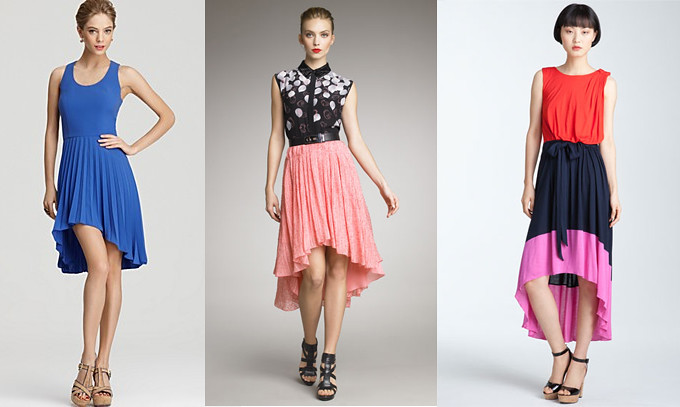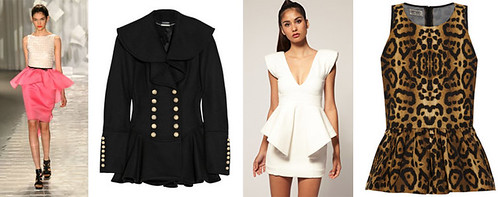
DIY Spring 2012 Fashion Trends: The High-Low Hem



So how do you wear this loud, bold trend and not look like Rainbow Brite? Keep the maximum number of colors to three. Based on the runway pictures above, it seems the easiest color combinations are with a white or black added in to the mix. Or, keep the colors in the family – try mixing different shades of blues together to get a monochromatic but still color blocked look. Depending on the pattern shapes, this can also be a figure flattering trend utilizing the technique of “trompe l’oeil” – some of the dresses and skirts below have a slenderizing look to them. Below is a compilation of patterns that you can use at home to try out one of the easiest spring fashion trends.
Dresses:

A peplum is essentially a short overskirt attached to a fitted garment, such as a skirt, jacket, or top. In modern day clothing, they became popular in the 1940’s (hello, Dior New Look), faded way after a few years, and then came roaring back in the 80’s and 90’s with power suits and shoulder pads. Today’s peplum seen on the spring runways is a slightly longer version of what was seen in the early 2000’s. What I love about peplums for my straight-up-and-down body type is that it gives the illusion of an hourglass shape.
After some scouring, here’s a compilation of patterns that could be used to achieve this runway look at home:
New Look is not one of the “Big 3” but falls under the Simplicity umbrella, and since I wanted to feature a skirt pattern this is the only one I could find. The peplums on these skirts aren’t dramatic and mirror the shape of the skirt underneath closely, so no worries about added bulk and width to the hip area. I’d love to adapt one of these skirts to recreate the Honeyed Peplum Skirt from Anthropologie.
Will you be sewing peplums this spring?